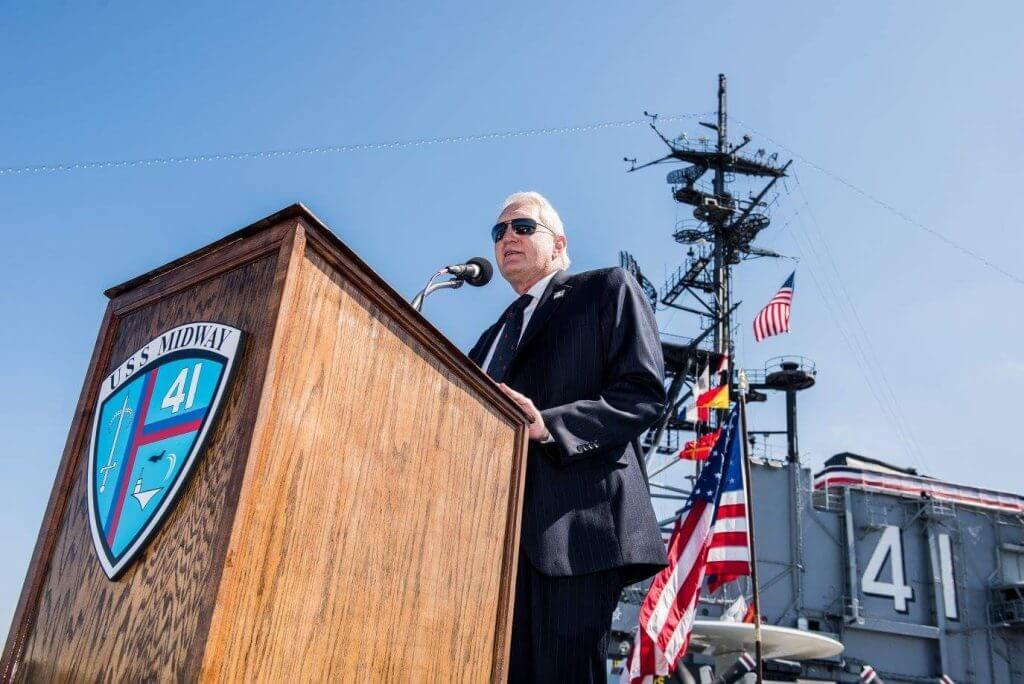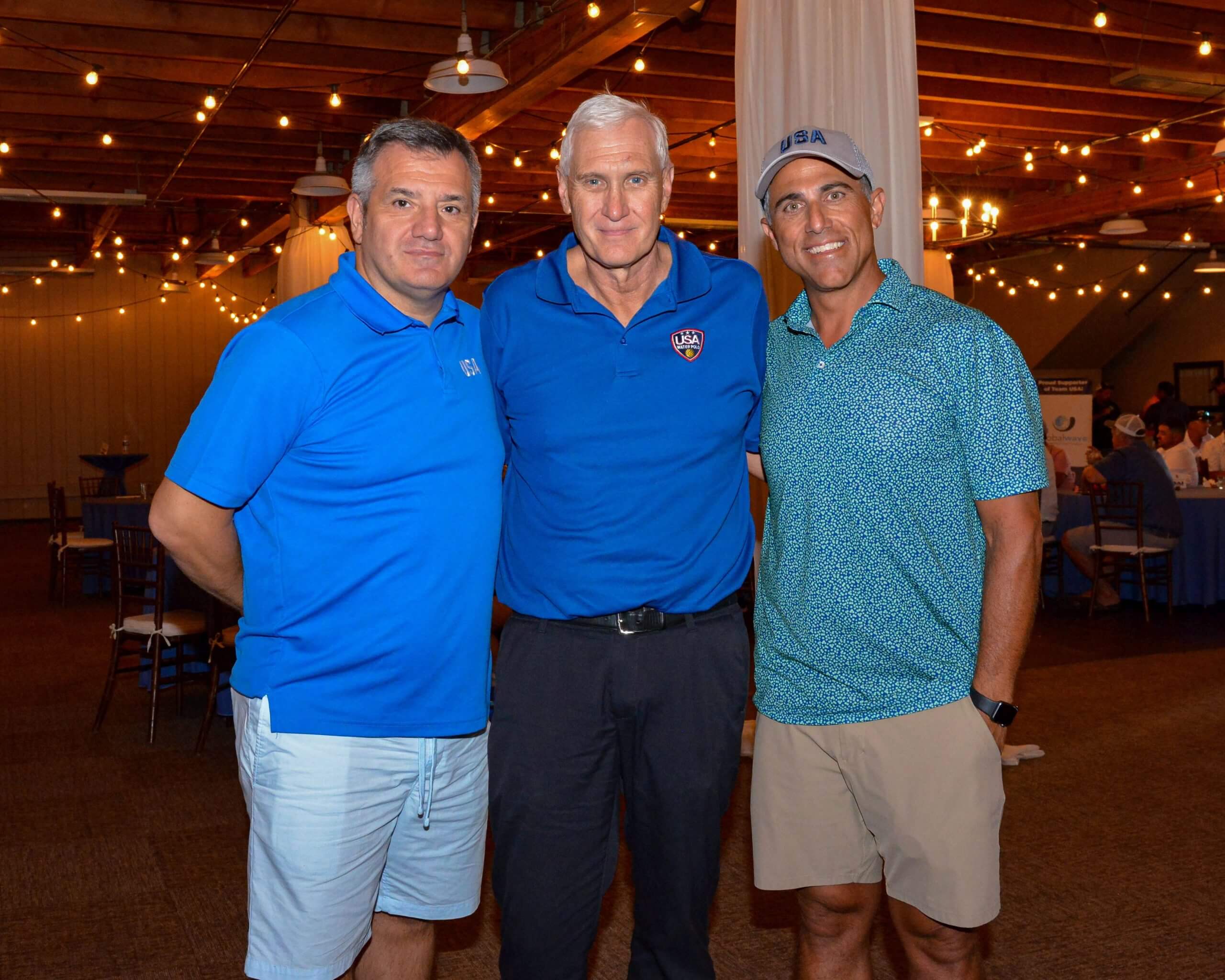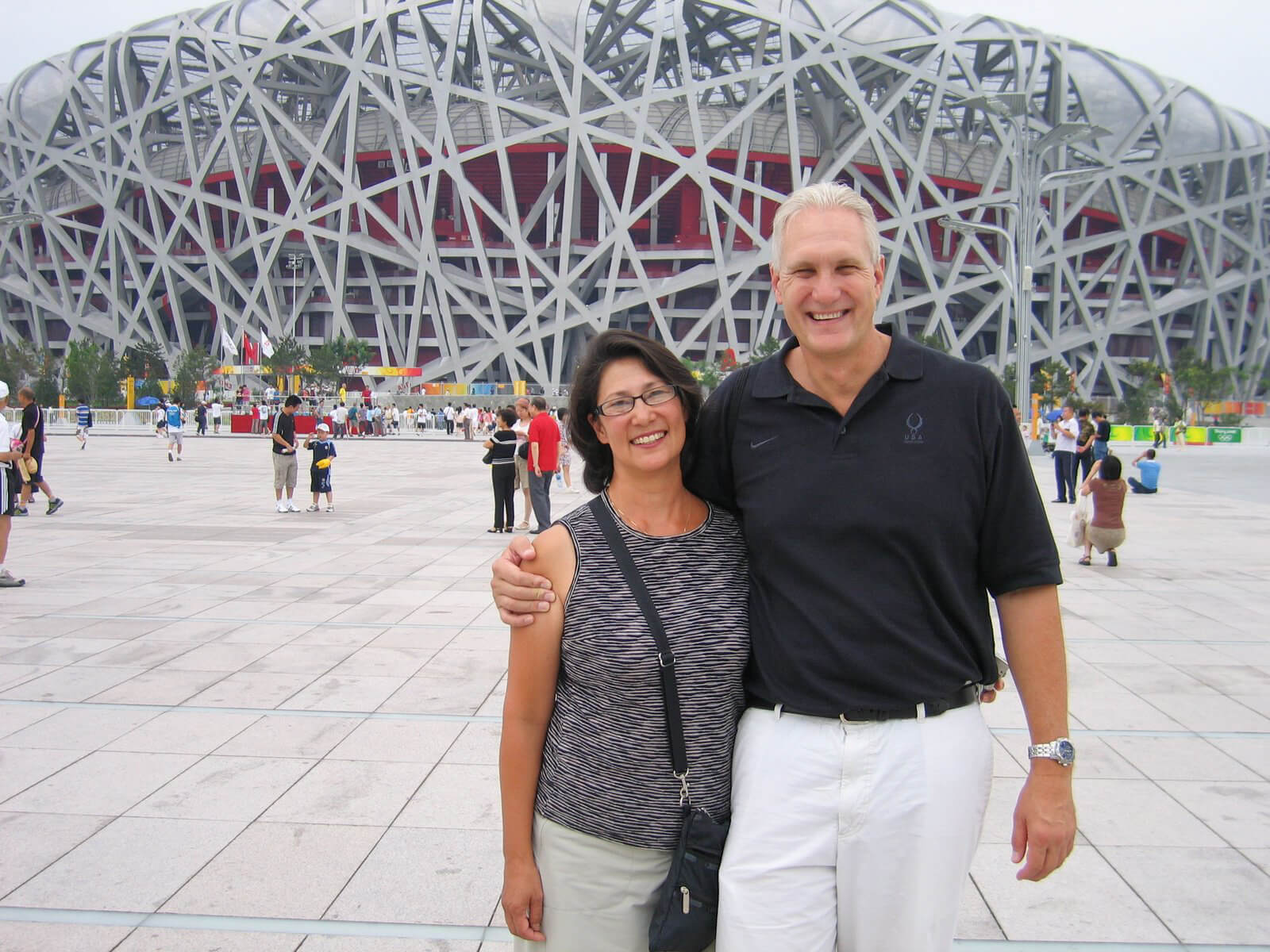Before Stepping Away, Chris Ramsey Built Strong Foundation for USA Water Polo

Before Stepping Away, Chris Ramsey Built Strong Foundation for USA Water Polo
Chris Ramsey’s first concern upon taking over as the CEO of USA Water Polo was making payroll. Eighteen years later, his successor will face much different challenges. But thanks to the work done under Ramsey’s watch, day-to-day solvency shouldn’t be one of them.
In nearly two decades in charge, Ramsey has taken USA Water Polo from running a deficit to enjoying a sizeable financial cushion, all while sustainably growing revenues, membership and along the way overseeing senior teams that have won six Olympic medals and seven World Championships.
That last figure isn’t the greatest measure of Ramsey’s tenure. He stepped down at the end of September and handed the reins to Jamie Davis. Instead, his fingerprints are over wider swathes of the organization, from its general professionalization to greater financial stability to an athlete-first shift in philosophy.
“The conclusion I reached pretty early was we needed to build the base of the pyramid, not the top of the pyramid,” Ramsey said in an interview with Swimming World this month. “We needed to pay attention to the whole pyramid, but the base of the pyramid, in my view, had been neglected.”
In the Beginning
Ramsey joined USA Water Polo at a critical moment in 2006. It was one of many sports governing bodies in the U.S. forced to restructure, in part because of it was one of several running unsustainable deficits. In the final year before Ramsey took over, USA Water Polo had a negative fund balance of more than $700,000. Its liabilities would peak in 2007 at $728,351 (more than $1.1 million in today’s dollars.)

Chris Ramsey, center, with U.S. men’s water polo head coach Dejan Udovicic, left, and U.S. women’s head coach Adam Krikorian in 2022; Photo Courtesy: USA Water Polo
By 2009, the organization was in the black. By 2023, revenues had increased from $3.3 million in 2005 ($6.0 million, adjusted for inflation) to a projected $18.9 million. His inherited deficit has transformed into a surplus of some $6.5 million that allows the organization to build for its future.
“The overarching goal in the way that I looked at it when I came in was to run it like a business,” he said. “I think there’s a lot of challenges with national governing bodies, because there’s a lot of history. There’s a narrow group of people who actually can play and participate at the Olympic level. And I felt that it was huge for us to be very clear-eyed about it. I tried to run it like it was my own money and our own business.”
He arrived at the organization as something of an outsider. While he played water polo at the University of Redlands, he also got his Masters of Fine Arts degree from Cornell in creative writing and worked in creative industries, as an administrator for television producer MacNeil/Lehrer Productions and as a principal for the New York City Ballet. He remained active in the sport – he still has his USA Water Polo Volunteer Coach of the Year plaque for coaching 12 years olds in Greenwich, Conn.. But his leadership moved the organization away from a coach-driven ethos, with its occasional territorial squabbles.
Ramsey’s mandate was long-term, with a board well-versed in corporate American for support. He was able to innovate, devising new revenue streams while bolstering the national team pipeline.
In the water, USA Water Polo has nearly doubled its membership to 50,000, recovering from a dip during the COVID-19 pandemic. That includes expanding the Olympic development program from 120 teams to more than 1,000 at last year’s Junior Olympics and sparking scholastic water polo in Texas. More money to support coaches has meant more water polo players in more places, and initiatives like Splashball, which involve athletes as young as age 5, has broadened participation.
Balancing the books
USA Water Polo’s revenues have increased 407 percent from 2005-23 at a time when United States Olympic and Paralympic Committee revenue grew only 117 percent. USOPC grants to USA Water Polo have only increased 35 percent in that time (and they account for only 19 percent of funding for the senior national team in 2023, as opposed to 34 percent in 2005).
The biggest increases have been $2.5 million in ODP revenue, which didn’t exist in 2005, and an exponential increase in fundraising (peer-to-peer, events) from a trickle in 2005 to more than $1.5 million in 2023. Revenue from events and programs have risen from barely $300,000 in 2005 to nearly $3 million, an inflation-adjusted increase of 591 percent. Revenues have grown faster than expenses, a sign of Ramsey’s (and the board’s) emphasis on fiscal responsibility.
“We couldn’t rely on others, and so we had to figure out a way to grow that revenue to what we thought would help us be competitive,” Ramsey said. “And we had to find ways to do that on our own.”
That progress required difficult decisions, but it has put the organization on more secure financial footing. It was overseen by someone with non-sports experience working with much bigger budgets.
“I understood fundraising,” Ramsey said. “I understood selling tickets, because I was in charge of all the box office of Lincoln Center for the ballet. I understood unions, although we don’t have them, but I understood collective bargaining and collective talent management. … I understood those core dynamics. But the other thing I understood was – and sometimes maybe this is more being a parent – sometimes you’ve got to say no. If you don’t have the money in the bank, even if you think it’s going to give your team a better chance to win an Olympic medal, to spend an extra $100,000, if you don’t have it, don’t spend it. I think I brought a certain discipline to it.”
Restraint in the present, Ramsey hopes, will set up USA Water Polo for the future. The organization last January entered into a memorandum of understanding with Mt. San Antonio College to house its national training center. It’s a hedge against the volatility of college water polo, which has long been a backbone of the American program but is facing increasing challenges as the NCAA reckons with athlete compensation. Mt. SAC gives water polo a home akin to the USOPC Training Center in Colorado Springs and offers a degree of centralization in a sport where, especially on the men’s side, the U.S. is facing state-funded programs for whom resources are essentially limitless.
Ramsey said the timing of his retirement owed to him nearing 70 years old but also wanting to give Davis, who arrives from USA Volleyball, runway to settle in before the 2028 Los Angeles Olympics visit the U.S.’s water polo homeland. It’s part of the reason why he made the announcement last December, allowing ample time for a search and a changing of administrations.
Success in the Water
Under Ramsey, the senior national teams have filled the trophy case. The women’s team won 37 major medals in international competition from 2006-24, including golds at the 2012, 2016 and 2020 Olympics plus seven World Aquatics Championships and five Pan American Games.

Chris Ramsey and wife Lynne Ramsey at Bird’s Nest Stadium in Beijing during the 2008 Olympics; Photo Courtesy: USA Water Polo
The men’s team won silver at the 2008 Olympics and bronze in Paris last summer, making America the only team with two top-four finishes at the 2024 Olympics, where the women slipped to fourth in failing to medal for the first time in 20 years. The men have also won five Pan Am Games since 2007.
While those results are great for the “halo of our brand,” Ramsey knows only a select handful of players aspire to the national team, where there aren’t exactly riches or fame awaiting. The goal for most players when they take up the game is to maximize their potential, whether that is developing in high school or getting to play in college. Given his trajectory with the sport and his family’s participation in it, he understands what a lot of players are looking to extract from it.
That’s why one of the first achievements he mentions from his tenure is the men’s bronze medal at the 2023 Under-20 World Championships, the first time the U.S. has medaled in that competition, which started in 1981. (The women have medaled seven times, including gold in 2001, 2005, 2013 and 2015, the latter two paving the way for Olympic achievement.)
It’s also why Ramsey’s definition of success – one he’ll bequeath to his successor, should Davis ask – is slightly more diffuse than this medal or that trophy.
“Success for me, and I hope this doesn’t sound trite, was becoming a better person,” he said. “It was those things that you learned in a lot of sports: The discipline to get up every day and do it when you don’t feel like doing it; the willingness to fail and learn that you can benefit from your failures, because you can figure out what you need to get better at, and you can overcome them. That changes your level of confidence as a person.”




He thinks he became a better person? WOW- when what he really did was put money and medals above athlete safety.
He knew what ref Korbakis did and he knew what coach Hojreh was doing and did not protect the female ref or the minor players. He didn’t report coach Hojreh to police, just reported him to SafeSport when both entities have to be reported to. Also, he lied to Congress. And NO ONE at USAWP forced him out when all this info came out, they just let him retire. So shameful.